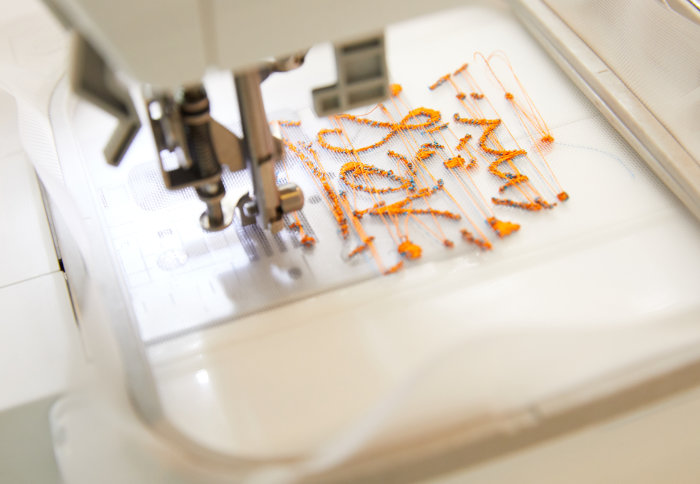Imperial showcases best of student design

Imperial’s Dyson School of Design Engineering opened its doors to the public for the first time as part of Exhibition Road Day of Design.
From Robotic dragonflies to new fashion technology, Imperial students from the Dyson School and across the College gave the public a unique insight into the latest prototypes and the way that they’re hoping to use design to revolutionise our lives.
 The event, held to mark ten years of London Design Festival, brought together exhibitions, workshops and talks by the Brompton Design District, the Design Museum, Imperial College London, the Natural History Museum, the Science Museum and the V&A.
The event, held to mark ten years of London Design Festival, brought together exhibitions, workshops and talks by the Brompton Design District, the Design Museum, Imperial College London, the Natural History Museum, the Science Museum and the V&A.
Imperial’s Dyson School of Design Engineering, which opened in 2015, is Imperial’s newest Engineering Department. The school equips students to bridge the gap between traditional engineering and design to create innovative solutions to modern challenges.
It currently offers an undergraduate MEng in Design Engineering, and two MA/MSc double masters courses run jointly with the Royal College of Art, as well as PhD opportunities.
From sketch to embroidery
 Exhibitors included Sabina Weiss, an alumnus from the Dyson School of Design Engineering and the Royal College of Art, who demonstrated a machine that can turn hand sketches into digital embroidery.
Exhibitors included Sabina Weiss, an alumnus from the Dyson School of Design Engineering and the Royal College of Art, who demonstrated a machine that can turn hand sketches into digital embroidery.
The machine, which she calls RE.MASTER, allows people with no embroidery experience to quickly and easily create new textiles or personalise fabric items.
At the same time, the machine encourages users to learn new embroidery techniques by observing the way it interprets their hand drawn design.
Understanding flight
 Dr Huai-Ti Lin, from the Department of Bioengineering, joined the Dyson School students for the event. He showcased a set of metre-long dragonfly wing models that help demonstrate the mechanism of insect flight.
Dr Huai-Ti Lin, from the Department of Bioengineering, joined the Dyson School students for the event. He showcased a set of metre-long dragonfly wing models that help demonstrate the mechanism of insect flight.
The models are part of a project to understand how dragonflies guide their movement during flight. This involves mapping the tiny sensors in the wing veins that allow dragonflies monitor the forces and loads exerted on their wings while they are flapping, so that they can remain stable.
The giant wings were created from real 3D scan of dragonfly wings to provide a visual representation of these hidden senses. Visitors were invited to interact with the wings, which produce an array of light patterns when moved in different ways.
Coding made easy
 Viraj Joshi, a recent graduate from the Dyson School of Design Engineering and the Royal College of Art, is making programming electronics easier by enabling users to code using finger gestures.
Viraj Joshi, a recent graduate from the Dyson School of Design Engineering and the Royal College of Art, is making programming electronics easier by enabling users to code using finger gestures.
The tool, called AirWire, interprets simple finger gestures and generates coding to control electrical components such as motors and lights.
The code is generated in real time, allowing users to see and understand how it relates to each component.
He hopes that the intuitive tool will encourage more people to develop an interest in coding.
Sharing the wonder
During the weekend, Imperial academics also shared their insights with the public through eye opening talks and presentations. Dr Stephen Green, Senior Teaching Fellow from the Dyson School of Design Engineering delved into Exhibition Road’s rich design history, from the Great Exhibition to the world’s first design school. Dr Thrishantha Nanayakkara, Reader in Design Engineering and Robotics, asked whether we can trust robots to care for our lives and families – from robotic surgeons to self-driving cars.
Article text (excluding photos or graphics) © Imperial College London.
Photos and graphics subject to third party copyright used with permission or © Imperial College London.
Reporter
Deborah Evanson
Communications Division